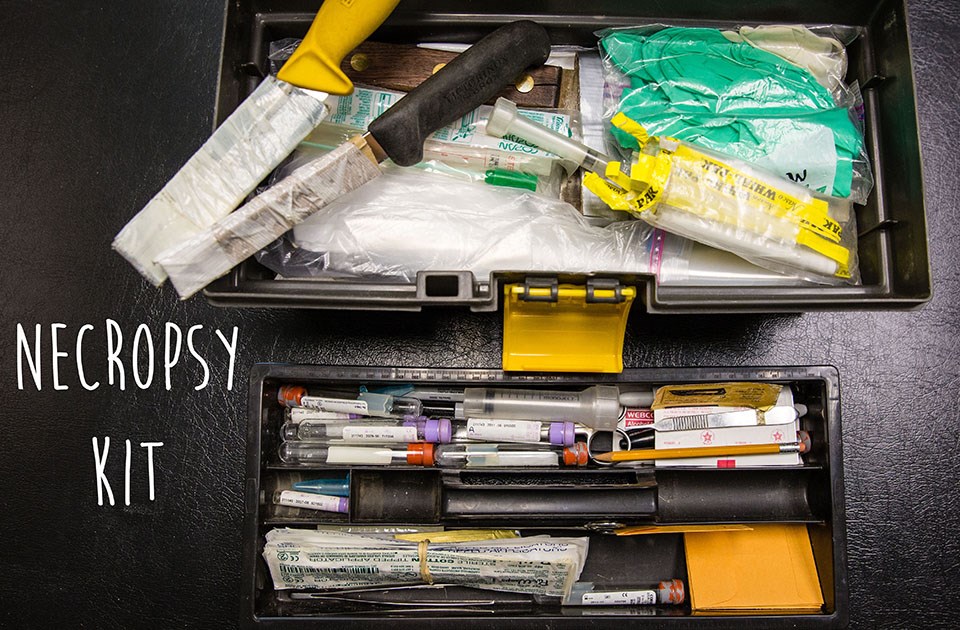Last updated: June 16, 2020
Article
#Sciencedeskdigs: Necropsy Kit

NPS Photo/ M.Reed
A big part of my job is to help park managers and staff when they are experiencing unusual mortality events which means they are seeing more dead animals in their park than they expect during a certain time period. One way we help them is to do a disease investigation which usually requires performing necropsies which is an autopsy on an animal. In order to do a necropsy, you need a kit and my kit contains: scalpels (to get better samples), forceps (to hold sample in place), scissors, baggies (for samples storage) blood tubes, hatchet (cut thru bone), biopsy instruments, gloves, a plastic apron, and a face mask (to protect me or the biologist from splashing fluids).
One recent disease investigation we did was at Devils Tower in Wyoming. They found 20 dead deer in just 2 months when they usually find less than 1 dead deer in that same time period. They knew something was wrong so the park managers contacted me to help solve their deer death mystery. In order to figure out what might be killing the deer I asked park biologists to take fresh tissue samples and send them to us. By looking for pathogen DNA in those samples we were able to rule out several bacterial and viral causes of death and ultimately diagnose Epizootic Hemorrhagic Disease (EHD), a virus transmitted by midges that affects deer around the country. After checking in with Wyoming Game and Fish Department we learned that others were finding similar hemorrhagic disease in deer across this region. Puzzle solved! This disease does not affect humans but can cause population scale die-offs in deer.
I love coming to work each day not knowing what disease mystery or puzzle there will be to solve! The hard days are when we end up with more question marks than answers but this is an opportunity to look even deeper and collaborate with colleagues across the country to resolve questions that help park managers keep wildlife populations healthy.
